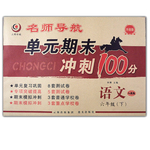题目内容
4.Mobile phone users will be able to charge their devices wirelessly for the first time from 2015.Fujitsu,the Japanese technology company,has created a system capable of charging quite a few portable electronic devices in the meanwhile,such as mobile phones,digital cameras and laptop computers without the need for cable connections.Electric cars users may also eventually be able to charge their vehicles wirelessly using the same technology according to Fujitsu,which presented a system at an Institute of Electronics,Information and Communication Engineers Conference at Osaka Prefecture University.
Claiming to be the world's first of its kind,the technology works on the basis of the transmission of electricity using magnetic fields between the charger and the electronic device.The system enables wireless charging at distances of up to several metres,with the final aim of installing public"charging spots"on the streets in order to enable easy charging around the clock.
Scientists at Fujitsu Laboratories are planning to commercially sell products including the new wireless charging system as early as 2012but did not make it clear how much they would cost."This technology makes it possible to add compact wireless charging functions into mobile phones and enabling several portable devices to be charged at the same time without any restrictions(限制)on their position in association with the charger,"the company said in a statement.
The growing popularity of portable electronic devices ranging from iPads to e-readers is expected to fuel a boom in wireless recharging technology developments over the coming decade.
Mobile phone users in Japan can currently fill up their batteries using disposable(一次性的)portable plug-in battery-operated devices--available at most train stations and convenience stores--although phone companies warn any use for too long can damage the phones.
The new system displayed by Fujitsu,however,is significantly advanced and represents the next generation of portable recharging systems using highly tuned wireless technology.The company added,"We are also looking at applying the results of this work to fields other than portable electronics,including power transmission between circuit boards or computer chips,and providing mobile charging systems for electric cars."
55.The writer's purpose of writing the passage isB.
A.to analyze the current international situation
B.to introduce a new technology applied to charging wirelessly
C.to encourage customers to purchase the new charging devices
D.to warn people against using disposable portable plug-in battery-operated devices
56.According to the new technology,electricity can be transmitted byC.
A.using batteriesB.using the electronic devices
C.using magnetic fieldsD.using disposable portable plug-in battery-operated devices
57.What is certain according to the passage is thatC.
A.the charging system can serve one portable electronic device at a time
B.all the convenience stores in Japan can provide the charging service now
C.wireless charging works within a distance of up to several metres
D.the new product doesn't look promising.
分析 本文属于说明文阅读,作者通过这篇文章主要向我们描述了手机无线充电技术的原理优缺点和发展前景,表明此技术前景光明.
解答 55.B.写作意图题.本文开篇(Mobile phone users will be able to charge their devices wirelessly for the first time from 2015.)点题:介绍手机无线充电技术.故选B.
56.C.细节理解题.根据第三段中的"the technology works on the basis of the transmission of electricity using magnetic fields between the charger and the electronic device."可知选C.
57.C.细节判断题.根据第四段中的"enabling several portable devices to be charged at the same time"可知A项陈述错误;根据倒数第二段中的"available most at train stations and convenience stores"可知B项陈述错误;根据最后一段,可知此技术前景光明,D项错误.只有C项与第三段中的"The system enables wireless charging at distances of up to several metres"相符.故选C.
点评 考察学生的细节理解和推理判断能力,做细节理解题时一定要找到文章中的原句,和题干进行比较,再做出正确的选择.在做推理判断题不要以个人的主观想象代替文章的事实,要根据文章事实进行合乎逻辑的推理判断.

 名师导航单元期末冲刺100分系列答案
名师导航单元期末冲刺100分系列答案 名校名卷单元同步训练测试题系列答案
名校名卷单元同步训练测试题系列答案| A. | have thought | B. | .thought | ||
| C. | .was thinking | D. | .have been thinking |